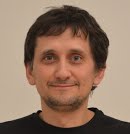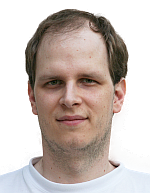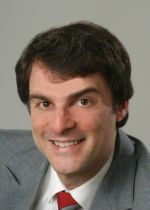 Jaroslav Křivánek is a researcher, developer, and associate professor of Computer Science at the Faculty of Mathematics and Physics of Charles in University Prague. Prior to this appointment, he was a Marie Curie research fellow at Cornell University, and a junior researcher and assistant professor at Czech Technical University in Prague. Jaroslav received his Ph.D. from IRISA/INRIA Rennes and Czech Technical University (joint degree) in 2005. His primary research interests are global illumination, radiative transport (including light transport), Monte Carlo methods, and visual perception, with the goal of developing novel practical ways of producing realistic, predictive renderings of virtual models. The technologies he has co-developed are used, among others, by Weta Digital, PIXAR Animation Studios, or Sony Pictures Imageworks. He is currently working on new software, Corona Renderer, with the goal to challenge the status-quo in rendering technology used for visualizations in architecture and industrial design. In 2014, Jaroslav was selected for the New Europe 100 list, “a list of outstanding challengers who are leading world-class innovation from Central and Eastern Europe for taking computer graphics to the next level”. His talk takes place on Monday, December 8, D0206 at 1pm.
Jaroslav Křivánek is a researcher, developer, and associate professor of Computer Science at the Faculty of Mathematics and Physics of Charles in University Prague. Prior to this appointment, he was a Marie Curie research fellow at Cornell University, and a junior researcher and assistant professor at Czech Technical University in Prague. Jaroslav received his Ph.D. from IRISA/INRIA Rennes and Czech Technical University (joint degree) in 2005. His primary research interests are global illumination, radiative transport (including light transport), Monte Carlo methods, and visual perception, with the goal of developing novel practical ways of producing realistic, predictive renderings of virtual models. The technologies he has co-developed are used, among others, by Weta Digital, PIXAR Animation Studios, or Sony Pictures Imageworks. He is currently working on new software, Corona Renderer, with the goal to challenge the status-quo in rendering technology used for visualizations in architecture and industrial design. In 2014, Jaroslav was selected for the New Europe 100 list, “a list of outstanding challengers who are leading world-class innovation from Central and Eastern Europe for taking computer graphics to the next level”. His talk takes place on Monday, December 8, D0206 at 1pm.
Light Transport Simulation in the ArchViz and Visual Effect industries
Abstract: Research and practice of computer graphics is witnessing a renewed interest in realistic rendering based on robust and efficient light transport simulation using Monte Carlo and other statistical methods. This research effort is propelled by the desire to accurately render general environments with complex geometry, materials and light sources,
which is often difficult with the industry-standard ad hoc solutions. For this reason, the movie and archiviz industries are shifting away from approximate rendering solutions towards physically-based rendering methods, which poses new challenges in terms of strict requirements on high image quality and algorithm robustness.
In this talk, I will summarize some of my contributions in the area of realistic rendering using physically-based light transport simulation. I will start by reviewing the path integral formulation of light transport which is at the basis of the vast majority of recent advances in this area. I will then review our Vertex Connection and Merging algorithm, along with its recent extension to rendering participating media, which aims at robust handling of light transport in scenes with complex, specular materials. This algorithm has gained a very favourable reception by the research community as well as the industry; Within two year from its publication, it has been adopted by numerous major companies in the field, such as Weta, PIXAR or Chaos Group. In the next part of my talk, I will review our recent and ongoing work on light transport simulation in scenes with complex visibility, which remain an open challenge both for architectural visualizations as well as for the movie industry.
 Jiří Bittner is an associate professor at the Faculty of Electrical Engineering of the Czech Technical University in Prague. He received his Ph.D. in 2003 at the same institute. His research interests include visibility computations, real-time rendering, spatial data structures, and global illumination. He participated in a number of national and international research projects and also several commercial projects dealing with real-time rendering of complex scenes. His talk took place on Wednesday, June 10, 1pm in room E104.
Jiří Bittner is an associate professor at the Faculty of Electrical Engineering of the Czech Technical University in Prague. He received his Ph.D. in 2003 at the same institute. His research interests include visibility computations, real-time rendering, spatial data structures, and global illumination. He participated in a number of national and international research projects and also several commercial projects dealing with real-time rendering of complex scenes. His talk took place on Wednesday, June 10, 1pm in room E104.










 i
i



